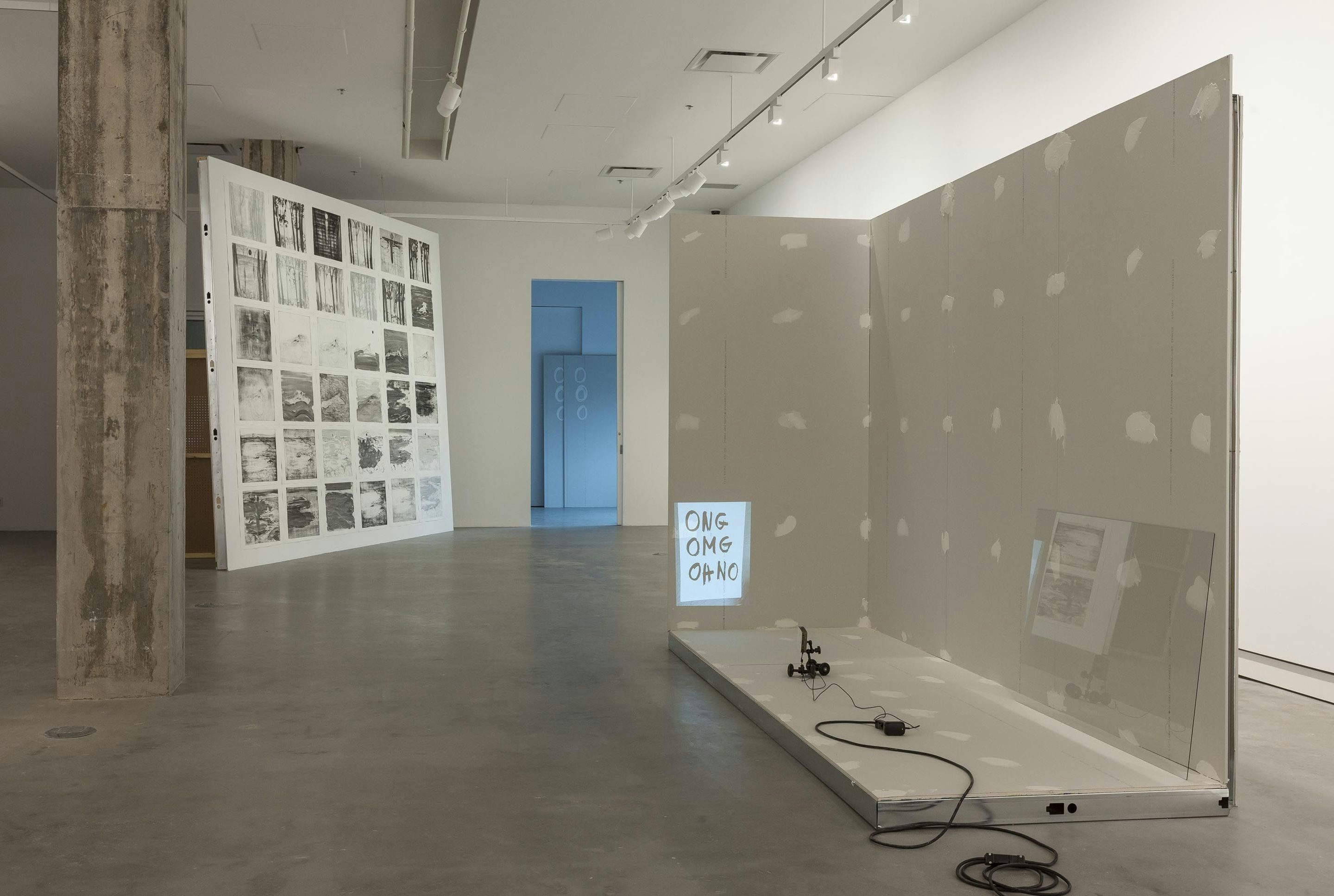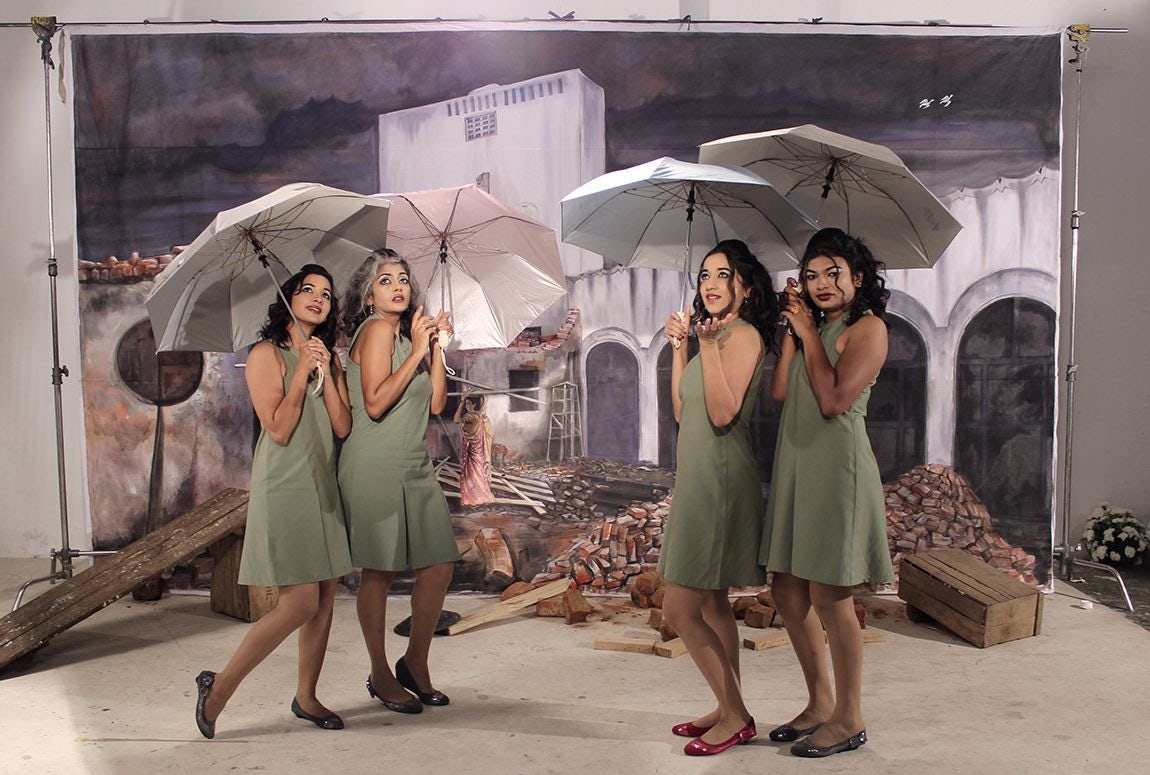
Putting Rehearsals to the Test
2016.09.01 - 11.26
VOX, centre de l’image contemporaine, the Leonard & Bina Ellen Art Gallery and SBC Gallery of Contemporary Art will host a major event entitled Putting Rehearsals to the Test, accompanied by a film program presented at the Cinémathèque québécoise and at VOX. The three curators of the exhibition, Sabeth Buchmann, Ilse Lafer, and Constanze Ruhm, bring together over fifty international artists who address a set of positions and strategies in contemporary art that consider rehearsal as both subject and practice. While the subject of “rehearsal” is popular in film and theater, as well as in the fine arts, it has been scarcely considered in historical and contemporary art discourses. It is with this in mind that the exhibition Putting Rehearsals to the Test investigates the role and function of the notion of “rehearsal,” understood as a methodology, a modus operandi, a medium, a site of representation and reflection for artistic production processes.

In-the-Making: The Post-Dramatic Image
SABETH BUCHMANN, ILSE LAFER AND CONSTANZE RUHM
While the subject of “rehearsal” is popular in film and theatre, as well as in the fine arts, it has been scarcely considered in historical and contemporary art discourses. It is with this in mind that the exhibition Putting Rehearsals to the Test investigates the role and function of the notion of “rehearsal,” understood as a methodology, a modus operandi, a medium, a site of representation and reflection for artistic production processes.
Referring to the notion of the post-dramatic theatre, the concept of the post-dramatic image is based on the assumption of an underlying device that is being experienced by variation, augmentation, delay, interruption, fresh starts, breaks or cracks, among others. Viewed in this light, the nexus of the pictorial and the narrative is based on a performative structure and/or script that enfolds itself within a determined system of (re-)signification and (re-)interpretation: a system that replaces the idea of the unique, individual and hermetic image by a bunch of aesthetic, historical and social parameters and relations blurring the distinction between content and form as well as between subject and method. Illuminating “rehearsal,” moreover, as a possibility to (re-)integrate spontaneity, a “sense of the moment,” mood changes, etc. into the process of painting, it thereby moves beyond suggestions of authenticity and individual expression. As well, “rehearsal” is rendered as an artistic methodology that is not narrated, but integral to the painterly (self-)reflection of the medium and to the process of painting itself: works by Heike-Karin Foell, Jutta Koether and Silke Otto-Knapp all reflect on and, at the same time, employ the methodology of rehearsal not mainly on a narrative level, but rather in the (literal) framework of the painting process itself—not least by repetitive fabrication of “abstract” and “figurative” constellations played out on one another, while at the same time employing “gendered” genres, media, motifs, structures, and gestures. The viewer is confronted with a multiplicity of (re-)inceptions and abrupt cessations—like in Merlin Carpenter’s paintings—that not least openly play with processes of beginning and abrupt endings, undermining distinctions between “unfinishedness” and “completeness” (see Ellen Art Gallery). Although deriving her contents and methodologies from the exchange relationships of social, cultural and technical transformations, Tanja Widmann deals with questions of “unfinishedness” in terms of “open endings” that lead to new ideas and contents. Showing a series of abstract images based on the letter O, the installation merges painterly gestures with the rhetorics of the digital. Addressing modes of transformation of information, the artist is interested in the relation between the verbal and visual languages within the expanding practices of imitation/appropriation/remix. Widmann’s work relates to performative test procedures implicit in those apparatuses that govern daily prosumption.
The modes of artistic articulation constellated here are also informed by historic codes, as in Mathias Poledna’s film installation, which refers to the year 1979 as a transitory moment in pop music and youth culture (between post-Punk and New Wave): In both Widmann’s and Poledna’s work, the “voids” that result from the repetitive interruption of the rhythm may thus be construed as facilitating a more exacting reading of the rules that constitute their inner structure and affect the reception process at the same time. Comparable with Koether’s and Otto-Knapp’s paintings, the ornamental-like pattern and/ or groups of figures/characters operate as rehearsing ensembles, thereby creating entangled layers of aesthetic and social “tableaux” (Foucault). Constituting storage for re-paintings, the rehearsal appears as a retroactive procedure. In a different and at the same time similar manner, Widmann moulds the codes of digital memory in order to disperse their function. Creating allegories of memory that fail to construct recognizable references on the past, the assertion of the contemporary appears as speculative projection based on discontinuity and contingence.
In Eva Meyer and Eran Schaerf’s installation Pro Testing (2010), the notion of “temporary ensembles” transforms into both a demonstration of a rehearsal and, vice-versa, a rehearsal of a demonstration, as the title already suggests. It is precisely the rehearsal that triggers the becoming of political subjects. To test the rules of the game is the “performative product,” which turns out to be a rehearsal of social interactions. This implies significant characteristics of allegorical narratives: appropriation, repetition and metonymy. Not least, three central terms on which the work is based—Tableau (art, aesthetics), Drapeau (the flag as a sign of national identity) and Bateau (on the one hand, as art-historical reference; on the other, as contemporary media signifier without referent)—describe precisely the route from the aesthetic to the political, explicitly referencing, of course, Marcel Broodthaers and his work Voyage on the North Sea (1973). Here, a shift between technology and painting becomes discernible, an allegory in transition not unlike Widmann’s constellation.
This model of a theatrical scenario can be linked to the paintings of Silke Otto-Knapp, with their focus on forming stages. Understood to be an allegorical site that exposes its own artificiality, the landscape drawings and paintings intervene in modernist and postmodern categories of flatness and surface that deny their inherent scenographic character. The series of drawings therefore appear as a permutative system that performs the means of representation as means of their (own) making. Associating the landscape genre to literary, choreographic and/or cinematic settings, Otto-Knapp’s concept defines the images as sites that correlates with the exhibition space. Such topologies appear as well in works that implicitly refer to the site of art production as such (the atelier, the sound or film studio, the proscenium) as well as to public and private spaces (the street, the kitchen, the office etc.), that—as in Mathias Poledna’s Actualité (2002), Hanako Geierhos’s Ontological Rehearsals (2011), Heimo Zobernig’s Screens (Untitled, 2008) and Loretta Fahrenholz’s Ditch Plains (2013)—appear as (symbolic) testing grounds. Procedures of rehearsal turn into repetitive exercises in order to un-learn given interactions, conventions and patterns: “People don’t know how to act. Just lie down. Lie down and quit acting like you know” (Fahrenholz). What if someone plays a role in a different way; if (s)he deactivates ruling laws? Here, the interrelation of artistic methods and subjects with new technologies becomes visible, thereby attesting to the interweavement of social and fictitious roles as a collective experience. In the case of Geierhos, combinations of minimalist forms, theatrical props and functional displays, the relations between objects and subjects appear as rhythmic organization of singular units within dynamic ensembles (see Ellen Art Gallery and SBC).
In this parcours from the sound studio to the artist’s studio to the black box as cultural model before/against its common utilization/exploitation, the demarcations between production and product, between studio and exhibition space, become a site of trial and error, of (self-)observation and (self-)evaluation.
Judith Barry’s “guide book” For when all that was read was… so as not to be unknown (2012) functions as paper architecture in order to remap the associative histories and labyrinthine nature of the “brain.” Taking the form of two posters, which can be folded into two small paper books, it configures an abstracted space containing different possibilities and modes of artistic production. Foell’s artist books my brain (2014–2016) reveal a similar operation between the media (drawings, painting and writing), that at the same time stresses the interplay of research, experimentation, found objects, and unforeseen chance (trans-)forming the mutual constitution of contents, shapes and methodologies. Besides their function as “scripts” for paintings and installations, the sketchbooks can be read and viewed as independent media—a moment that corresponds with Achim Lengerer’s Scriptings (see Ellen Art Gallery), a continuous practice of editing magazines, which serves as a tool for collaborative reading and writing as well as a medium that can be figured as a transitory object. Dealing with subjects and methodological devices from various fields (art, literature, film, theory, politics, science and technology), the editorial process creates a rehearsal-like scenario in which the participants (the active ones as well as the visitors) adopt and perform shifting roles. Here, Scriptings#46, a catalogue, in any case unreasoned and incomplete (2016) replaces the conventional exhibition texts. Using a reproduction of The Rehearsal (1874)—one of the famous dance rehearsal paintings by Edgar Degas—Klaus Scherübel conceived a calendar object La répétition (Prototype), VOL. 24, (2016) that corresponds with the individual timescales of the three exhibitions at the Leonard & Bina Ellen Art Gallery, the SBC Gallery of Contemporary Art and the VOX, centre de l’image contemporaine. Since every page of the calendar refers to the respective month, it represents both an autonomous and a functional object.
When the Guests Are Not Looking (2016) by Richard Ibghy & Marilou Lemmens is a series of ephemeral, invisible performance rehearsals centred on the character of Denis Diderot’s dialogue Rameau’s Nephew (1762–1777). These performances take place outside galleries’ opening hours, and are accessible only by way of a publication. While Ibghy & Lemmens’s ghost performer, whose actual existence is uncertain, literally rehearses in the institutional off space, Marie Claire Forté and Alanna Kraaijeveld (in dialogue with Sophie Bélair Clément) render visible a set of coordinates where the performers’ labour can be witnessed as their bodies moving through the history of choreography in their unannounced rehearsals titled Rehearsals for Collections of dances by Christian Rizzo, Gene Kelly and Stanley Donen, Édouard Lock, William Forsythe, Merce Cunningham, Saburo Teshigawara, Trisha Brown; Jeffrey Daniel, Michael Jackson and Vincent Patterson, Mats Ek, Dana Michel; Dana Foglia, Chris Grant and JaQuel Knight, Crystal Pite, Pina Bausch, Lloyd Newson, Tedd Robinson, Hofesh Shechter, Bob Fosse, Anne Teresa de Keersmaeker, Daniel Linehan, Amanda Acorn, Jiři Kilyán, Akram Khan, Stijn Celis, Deborah Hay, Liz Santoro and Pierre Godard, Marie Claire Forté, Meg Stuart and Philipp Gehmacher and others (2016).
Together with Achim Lengerer’s Scriptings publication, these performances take place in and around all three spaces, thereby linking the three scenarios of the exhibition Putting Rehearsals to the Test into one complex constellation of rehearsal.
A three-part exhibition presented at VOX, centre de l’image contemporaine, SBC Gallery of Contemporary Art, and the Leonard & Bina Ellen Art Gallery. A two-part film program screened at the Cinémathèque québécoise and VOX.
This event is made possible through the invaluable support of the BKA – The Arts and Culture Division of the Federal Chancellery of Austria, the Austrian Cultural Forum/Austrian Embassy, the Goethe-Institut, the IFA – Institute for Foreign Cultural Relations (Germany), the Mondriaan Fonds (Netherlands), the Conseil des arts et des lettres du Québec, the Canada Council for the Arts and the Conseil des arts de Montréal.
Programme de films | Du 2 septembre au 3 novembre 2016
